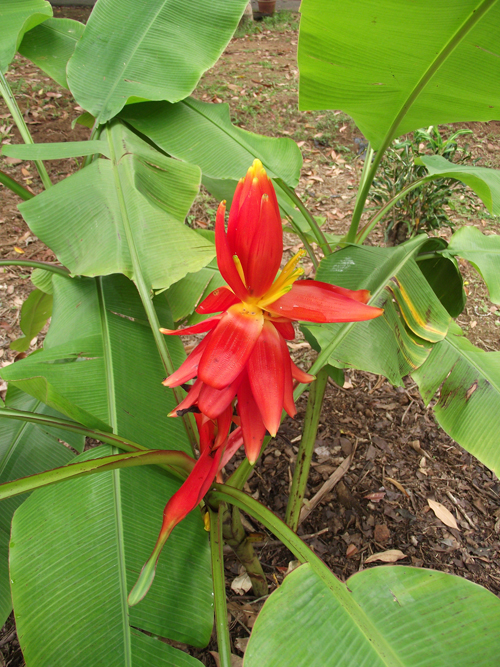Finnish botanist discovers new banana in Vietnam
Cultivated bananas are sterile and have no seeds in their fruits, which makes them easy to eat. It does make it difficult to breed new crosses between banana species. Being the 4th most important food crop in the world, it is important to keep the plantations physically and genetically healthy. To improve these cultivated bananas and especially make them more resistant to diseases, naturally occurring banana species in the wild are very important. For this reason retired sea captain and self-taught botanist Markku Häkkinen studied wild bananas for nearly 30 years and made 14 expeditions to Southeast Asia where bananas grow in the wild. On one of his expeditions to Vietnam, Häkkinen discovered a species of banana. This banana was a new species, which after thorough taxonomic study, was named in honour of Mr Häkkinen for his immense contribution on banana taxonomy. Musa haekkinenii is a small species up to 1.5 m tall and is quite ornamental with an upright flowering stem and bright pink flower bracts. The orange-yellow fruits are not good for human consumption, but are filled with seeds that are probably distributed by birds and monkeys. It is currently in cultivation at the Jardin des Plantes in Paris, but when sufficient material is available the Botanical Garden in Kaisaniemi will receive a cutting to add to their already extensive collection of living wild bananas. The new species is published in the botanical journal Phytotaxa (www.mapress.com/phytotaxa).
For further information: Curator Maarten Christenhusz phone +358 50 415 4464 maarten.christenhusz@helsinki.fi  Musa haekkinenii (photo: Markku Häkkinen)
Musa haekkinenii (photo: Markku Häkkinen)